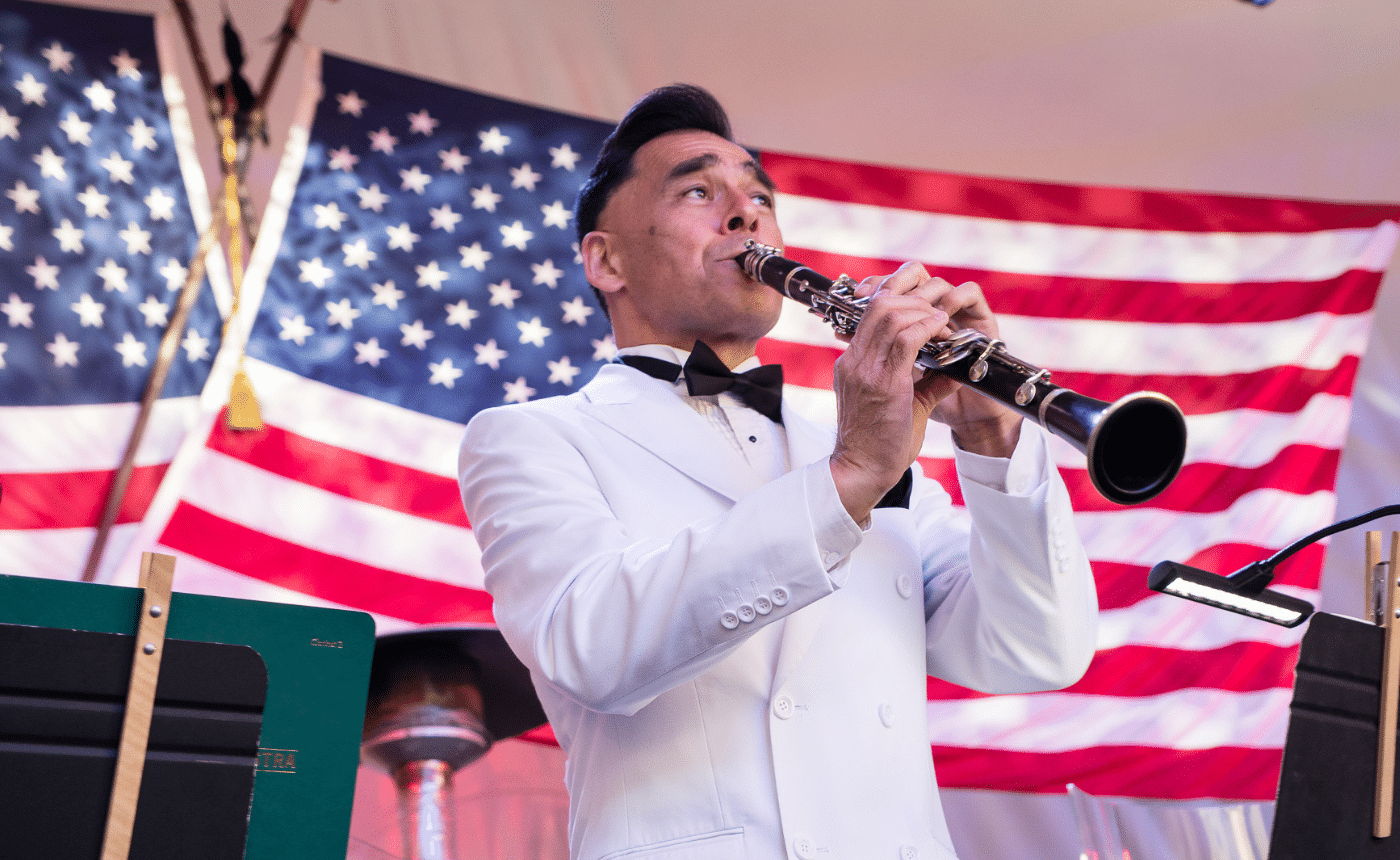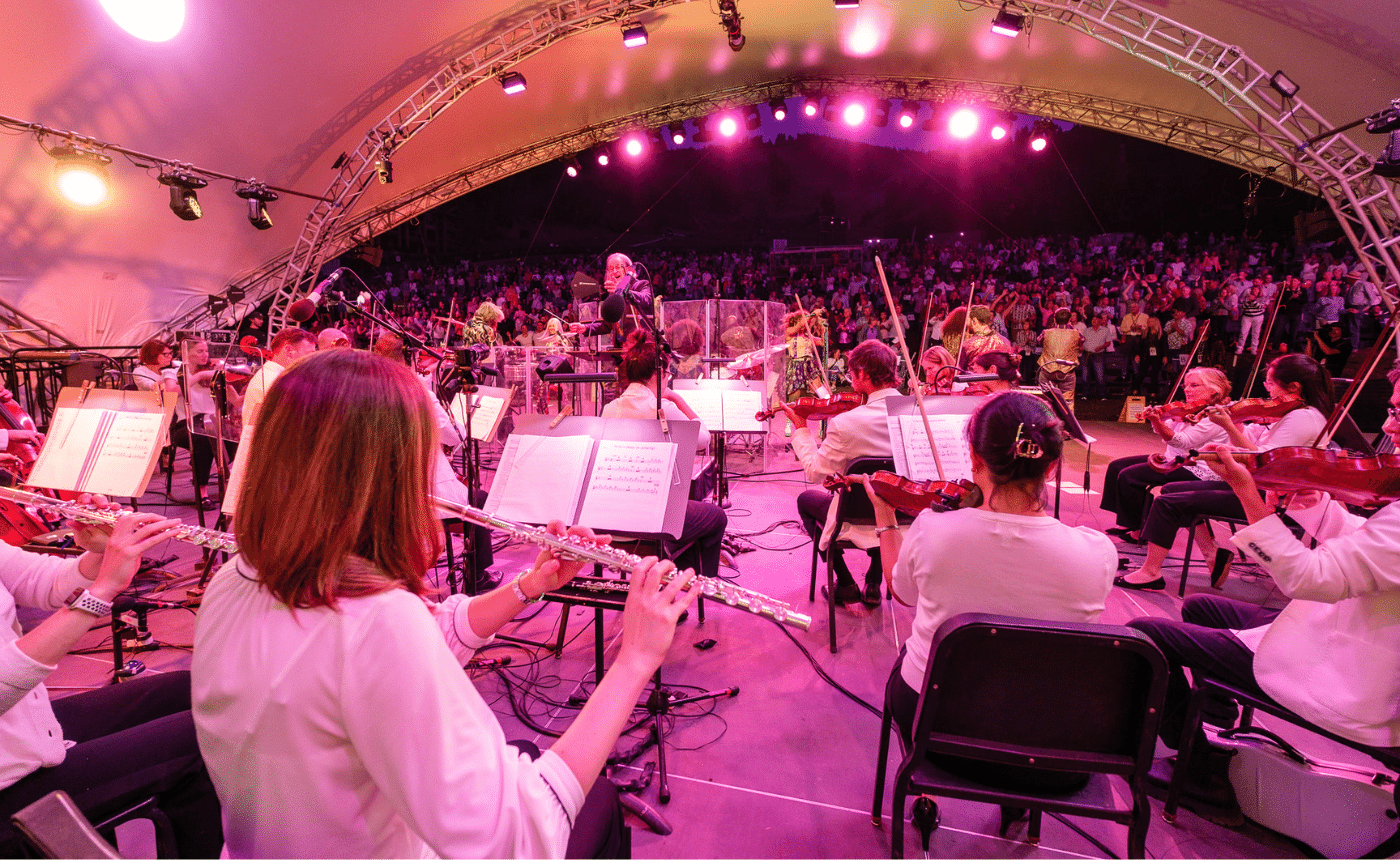Wagner – Tristan und Isolde: An Orchestral Passion
Richard Wagner (1813 – 1883); Henk de Vlieger (b. 1953): Tristan und Isolde: An Orchestral Passion
Instrumentation: 3 flutes, 3 oboes, 3 clarinets, 3 bassoons; 4 horns, 3 trumpets, 3 trombones, tuba; strings; percussion
Performance time: 1 hour, 4 minutes
Background
Wagner’s impact was transformative not just in opera or in classical music, but throughout the arts. Not even Beethoven had so great an impact on our conception of art; it is said that modern painters might not paint as they do today had Wagner not composed as he did yesterday. Both a great composer and a rebellious aesthetic philosopher, Wagner published his revolutionary ideas about artistic and musical expression in impassioned essays long before his operas themselves began to sound revolutionary. It was not until he embarked on composing Tristan und Isolde and his huge operatic tetralogy, Der Ring des Nibelungen, that these ideas fully took root in his music.
The magnificence of Wagner’s music is well suited to the immense thematic materials embodied in these operas, but brief prose summaries are not. Still, even a scant paragraph of description can suggest some reasons why, of all great classical composers, Wagner is the household name whose music we rarely get to hear. Some excerpts are familiar, of course — the ubiquitous wedding march from Lohengrin, with the words “here comes the bride” grafted on; the “Ride of the Valkyries” from the Ring’s second opera, Die Walküre; the preludes from operas including The Flying Dutchman, Die Meistersinger and Tannhäuser. But Tristan und Isolde, for all its brilliance and influence on the course of music, is an experience that is mostly reserved for enthusiasts lucky enough to live near an opera house with the resources to cast and produce it, although in the age of digital technology, that is changing by the season.
The development of Tristan und Isolde was oddly but inextricably tangled in Wagner’s personal life and his love affair with Mathilde Wesendonck. Wagner was perennially plagued by debt and in trouble with the authorities for his political statements; Mathilde and her husband, a wealthy silk merchant, offered Richard and his wife Minna the protection and privacy of a retreat on their lavish estate. But soon the composer and his patroness were consumed by their mutual infatuation and the embittered Minna fled the scene, sending a bitter rebuke to Mathilde for ruining her marriage.
Whether Richard Wagner and Mathilde Wesendonck actually consummated their passion is beside the point; their feelings were all-consuming. Wagner had already interrupted his work on his mammoth Ring cycle to develop Tristan und Isolde; he poured his passion for Mathilde into this opera, in which the eponymous lovers’ thoughts and feelings are far more real than the physical world outside their minds. When he resumed work on the Ring, he applied the knowledge he gained writing Tristan.
Has any other illicit love affair ever so powerful catalyzed a great artist’s work? The story of Tristan und Isolde, which Wagner crafted himself — he wrote all his own librettos — is really the story of his own experience of overwhelming love retold by way of German and Celtic myth. In it, the protagonists find transcendent love only by surrendering their connection to everyday realities and renouncing the external world. Their story is the opposite of worldly struggle: a pure embodiment of human will that reflected Wagner’s reading of Schopenhauer and his belief in the nobility of truly German culture. This interpretation of Schopenhauer, which some scholars have called it a misinterpretation, made Wagner one of the most favored composers of the Nazi regime. (Outspokenly anti-Semitic, Wagner reviled Jewish composers including Mendelssohn, Offenbach and Meyerbeer, who had supported his career.)
By now most audiences have learned to separate the greatness of Wagner’s art from the hatefulness of his personal philosophy, and his music has even been performed occasionally in Israel. But political realities added to the difficulties of programming Wagner’s works in the decades following World War II, and the debate lingers. In a 2012 article for The New Yorker, the critic Alex Ross described him as “the most volcanically controversial figure in the history of music.” As recently as 2011 the critic David P. Goldman, writing online for The Tablet, concluded that Wagner’s music should be banned from public performance in Israel but that it is indispensable for music students and professional musicians everywhere.
What to Listen For
Wagner completed work on Tristan in 1859, and at early performances the opening phrase of its prelude — which introduces us to what has come to be known as “the Tristan chord” — made some listeners swoon in their seats and quite literally terrified others. This is the music that philosopher Friedrich Nietszche called dangerously intoxicating, and that made painters of every discipline rethink their possibilities. What’s so special about a brief, inconclusive chord progression?
Wagner had already challenged the music world with great operas such as Die Meisersinger and Tannhauser as he honed his concept of all-encompassing music-drama: the Gesamtkunstwerk that unites design, music and stagecraft into a totally immersive artistic experience. But in Tristan he combined these ideas with harmonies that proceed without traditional resolution – ambiguous and layered, like thought itself. They hang in the air expressing emotion rather than melody, as if the orchestra were within us and artistic boundaries were brushed away. If a composer could write music like this, anything was possible. Why, for instance, should a painting be a picture of something?
Wagner’s building blocks are motivic phrases that are never classed as melodies, no matter how melodic they might sound, because they never seek to end in a musical resolution; instead, like our deepest feelings, they seem to have no particular beginning or end. Endless scholarship has been devoted to the meaning and interplay of Wagner’s motifs (Leitmotiven), but he did not expect us to track them as we listen. We sense their meaning and feel their impact more deeply through rapt listening than we could through conscious analysis.
Created in 1994 as a commission for the Netherlands Radio Philharmonic, Henk de Vlieger’s orchestral compilation of music from Tristan artfully isolates seven episodes from this non-episodic opera. Vlieger, a Dutch percussionist and arranger, has made something of a specialty of creating such orchestral syntheses, including two other Wagner arrangements. His “orchestral passion” focuses solely on the characters Tristan and Isolde, excluding such major supporting players as Tristan’s sovereign, King Marke, and Isolde’s nurse-companion, Brangäne — though opera-lovers will protest that these characters have their share of magnificent music. But the result is a coherent and continuous orchestral work unified by the Tristan chord, which we hear throughout.












